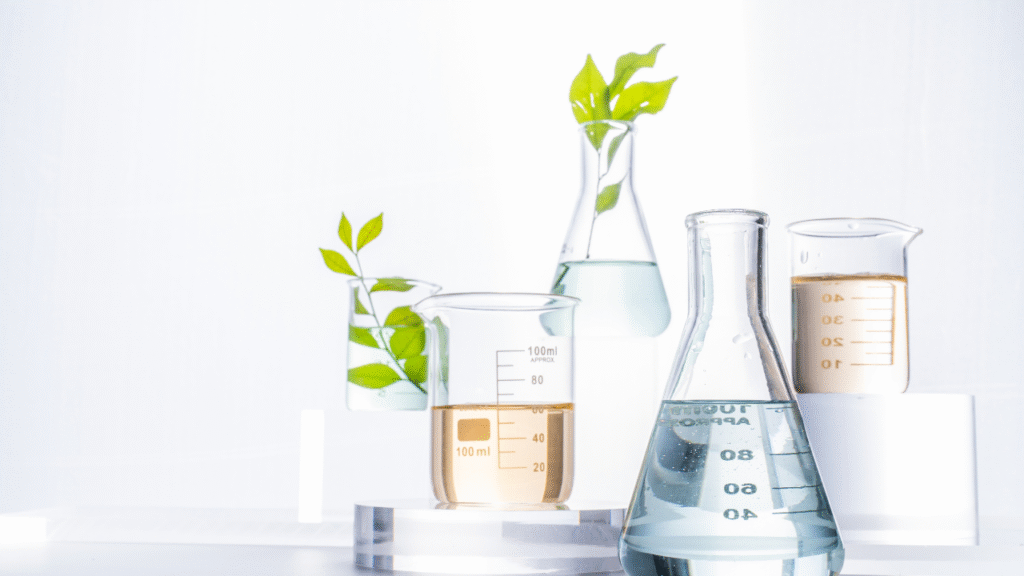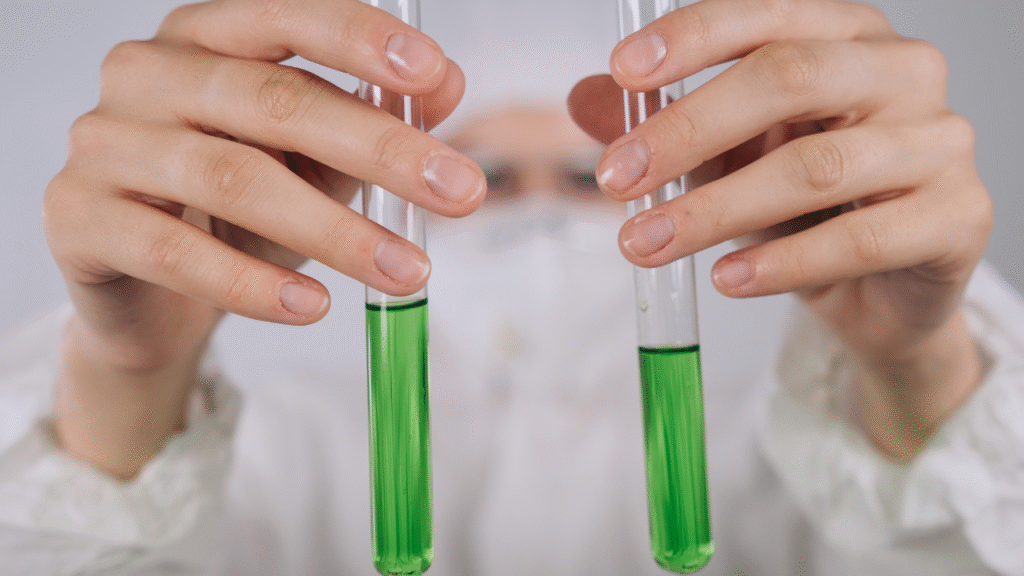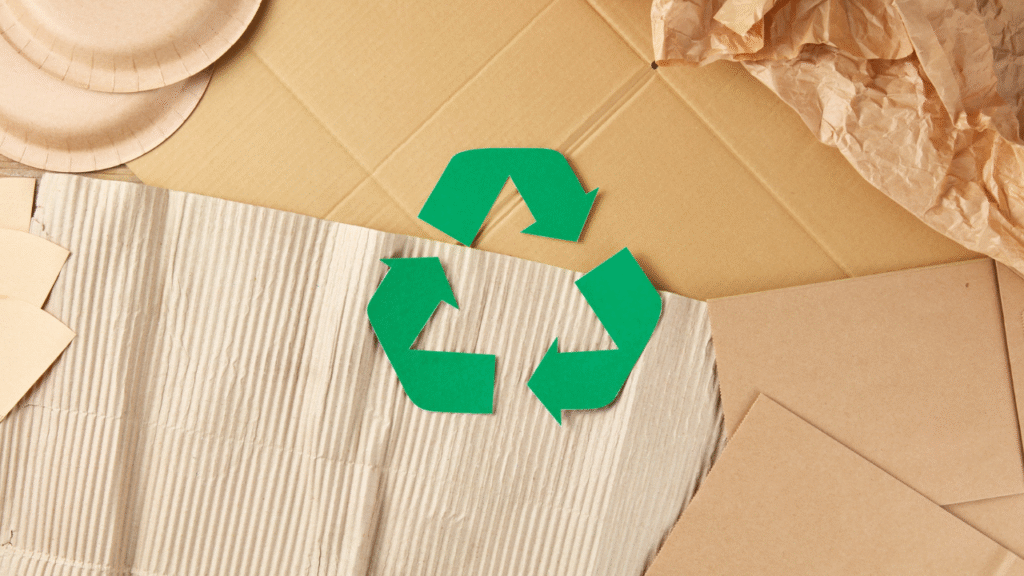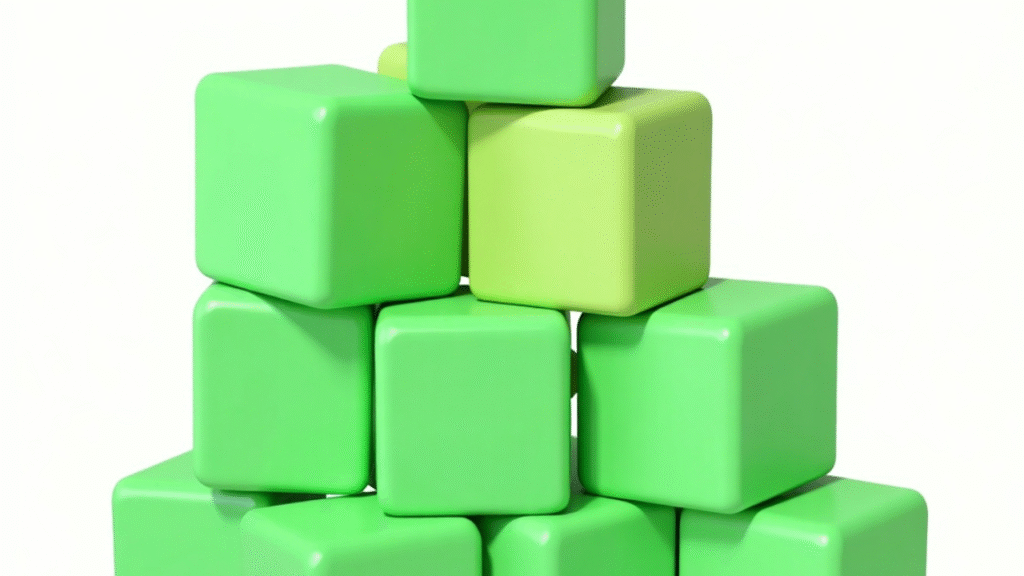In an era of climate urgency, the chemistry of sustainability is becoming a powerful force behind greener technologies and cleaner industries. From biodegradable plastics to carbon-neutral fuels, chemistry plays a vital role in designing processes and materials that support a more environmentally responsible future.
Let’s explore how the chemistry of sustainability, through smart materials, green reactions, and a focus on environmental impact, is reshaping everything from manufacturing to medicine.
What is the Chemistry of Sustainability?
The chemistry of sustainability, also known as green chemistry, refers to the design of chemical products and processes that reduce or eliminate the use and generation of hazardous substances. It aims to:
- Minimize waste
- Conserve energy
- Use renewable raw materials
- Avoid toxic solvents and by-products
In short, it’s about making chemistry safer, cleaner, and more in tune with nature.

Why Chemistry Matters in Sustainability
The chemistry of sustainability touches almost every aspect of our lives—food, clothes, medicines, packaging, fuel, electronics—and therefore holds massive potential for sustainable innovation.
Through eco-friendly chemical reactions and bio-based materials, sustainable chemistry helps industries:
- Cut down harmful emissions
- Reduce non-recyclable waste
- Improve energy efficiency
- Replace petroleum-based products with renewable alternatives
From labs to factories, the chemistry of sustainability is not just theoretical—it’s practical and impactful.
Sustainable Materials: Greener Building Blocks
Materials matter. Whether it's plastics, textiles, or building materials, choosing greener options makes a difference.
🌿 Examples of Eco-Friendly Materials:
- Biodegradable polymers: Made from corn starch, PLA (polylactic acid) is used in packaging and 3D printing.
- Recycled composites: Plastic or glass-reinforced materials reused in construction and furniture.
- Bio-based plastics: Derived from renewable biomass like sugarcane or algae.
- Sustainable textiles: Bamboo fiber, organic cotton, and regenerated cellulose are popular green fabrics.
🔍 Why These Matter:
- They reduce dependence on fossil fuels.
- They decompose or recycle more easily.
- Their production often requires less energy and water.
The shift toward sustainable materials is not just eco-conscious—it’s also economically smart as industries move to meet consumer demand for greener products.

Green Reactions: Cleaner Chemistry in Action
Traditional chemical reactions often rely on hazardous solvents, produce toxic by-products, and require high energy inputs. Sustainable chemical reactions, however, follow the 12 principles of green chemistry, such as:
🔬 Key Principles:
- Atom economy: Maximize the incorporation of all materials used into the final product.
- Use of safer solvents: Water or supercritical CO₂ instead of benzene or chloroform.
- Energy efficiency: Favor reactions at room temperature and pressure.
- Renewable feedstocks: Use plant-based inputs rather than petrochemicals.
- Catalysis over stoichiometric reagents: Efficient and selective reactions using enzymes or metal catalysts.
💡 Real-World Examples:
- Enzymatic synthesis of pharmaceuticals: Reduces waste and side reactions.
- Photocatalysis: Uses light energy (especially solar) to drive reactions instead of heat.
- Microwave-assisted organic synthesis: Speeds up reactions using less energy.
These innovations prove that the chemistry of sustainability doesn't mean compromising performance—just doing things smarter and safer.
Environmental Impact: Chemistry That Cares
One of the main goals of the chemistry of sustainability is to minimize environmental impact. This includes everything from reducing emissions during production to ensuring safe disposal at the product’s end-of-life.

📉 Chemistry Reducing Environmental Harm:
- Carbon capture materials: Chemically bind CO₂ from industrial exhaust.
- Green cleaning agents: Use biodegradable surfactants and enzymes instead of phosphates.
- Low-VOC paints and coatings: Reduce indoor air pollution and smog formation.
- Water purification materials: Activated carbon, nano-filters, and smart membranes remove pollutants more effectively.
These solutions align with circular chemistry, where materials are continuously reused or safely reintegrated into the environment.
Industry Applications of the Chemistry of Sustainability
🏥 In Pharmaceuticals:
- Greener synthesis routes reduce solvent use and improve drug safety.
- Waste reduction and cost savings through efficient catalyst systems.
🍃 In Agriculture:
- Bio-pesticides derived from plants and microbes are safer for soil and water.
- Slow-release fertilizers reduce runoff and increase nutrient uptake.
🛂 In Energy:
- Biofuels from algae and cellulose offer renewable alternatives to fossil fuels.
- Solar panels made with less-toxic materials and higher efficiency.
🧴 In Consumer Products:
- Shampoos, soaps, and cosmetics now feature biodegradable, skin-safe ingredients.
- Packaging made from compostable plastics or recycled content.
Sustainable industrial chemistry isn’t limited to a single sector—it’s spreading across the entire supply chain.

The Life Cycle Approach: Cradle to Cradle Chemistry
One of the most important aspects of green technology in chemistry is thinking about a product’s full life cycle—from resource extraction to manufacturing, usage, and disposal.
This “cradle-to-cradle” thinking includes:
- Designing for disassembly (easy recycling)
- Using durable materials with minimal degradation
- Tracking the environmental footprint of every ingredient
- Designing products to biodegrade safely
This shift is already visible in electronics, where materials are being reengineered to allow for easier reuse, recycling, and remanufacturing.
The Role of Chemists in Sustainability
Chemists are uniquely positioned to lead the charge toward a greener world. Whether working in research labs, policy, education, or product design, they can:
- Develop new green synthesis methods
- Replace harmful substances with eco-friendly alternatives
- Analyze product life cycles for impact reduction
- Educate the public and industries about sustainable choices
As the chemistry of sustainability becomes mainstream, chemical innovation is moving from the bench to boardrooms—shaping decisions that affect people and the planet.
A Quick Recap: Why the Chemistry of Sustainability Matters
Let’s sum up the key contributions of the chemistry of sustainability:

✅ Benefits at a Glance:
- Reduces environmental pollution
- Conserves non-renewable resources
- Creates safer products and work environments
- Supports circular economy models
- Encourages eco-innovation across industries
Looking Ahead: The Future of Sustainable Chemistry
As we head deeper into the 21st century, the chemistry of sustainability will become not just desirable—but essential. With growing regulatory pressures, climate challenges, and consumer awareness, industries are turning to chemistry to:
- Achieve net-zero emissions
- Design zero-waste processes
- Utilize carbon-neutral or carbon-negative materials
Emerging trends like AI-powered chemical synthesis, green nanotechnology, and real-time life cycle tracking will take sustainability to the next level.
The future of chemistry isn’t just bright—it’s green.
Final Thoughts
The chemistry of sustainability is more than a scientific trend—it’s a global movement. From smart materials and clean reactions to real environmental impact, it’s changing how we produce, consume, and think about the world around us.
By supporting eco-friendly innovation and demanding greener choices, we can all play a part in this molecular-level transformation—because every reaction counts.








